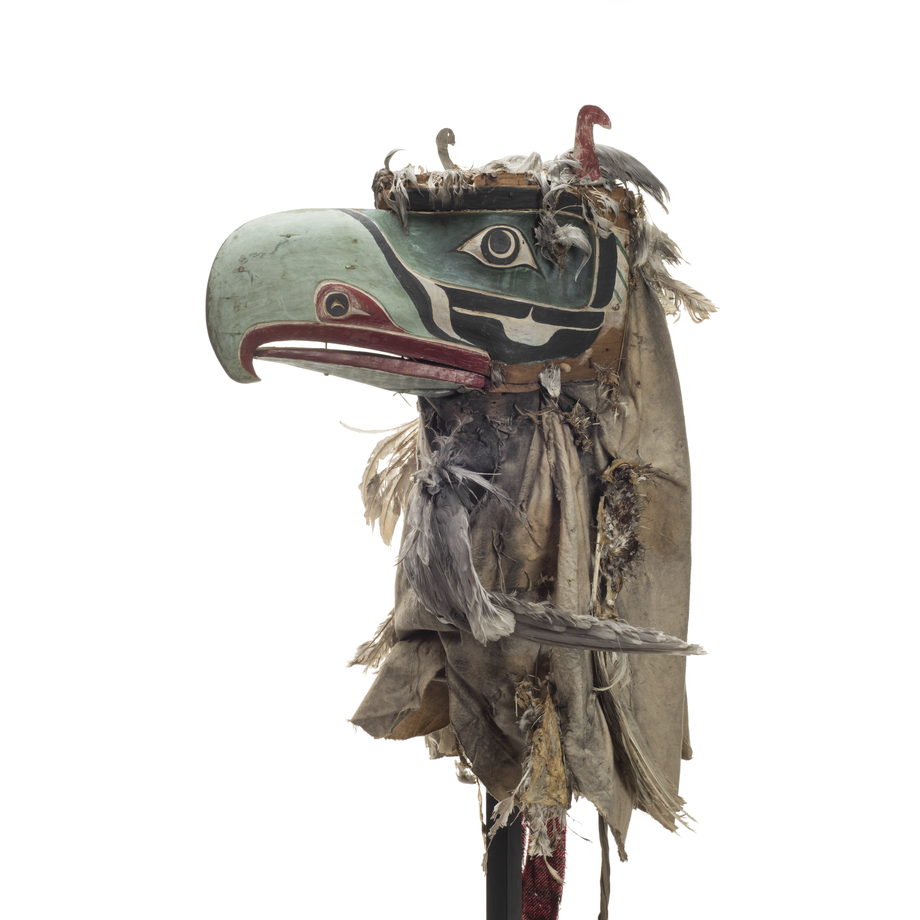Kulus
Supernatural down-covered bird
In many legends, Kulus is referred to as the younger brother or sister of the Thunderbird. Kulus does not have feathers and is noted for its very thick coat of white down; it is said to be so thick that the bird has the tendency to perspire, and is happy to remove his covering and become human for a while. This refers to the ability, like Thunderbird, to transform and become human. In many origin stories, a Kulus flew down from heaven and shed his costume to become the founding ancestor of the tribe or clan.
Catalogue Information
Provenance
Owned by Harry Mountain until its forced surrender to Indian Agent William Halliday on March 25, 1922. Halliday later displayed and photographed the seized pieces at the Parish Hall in Alert Bay. After doing an inventory, he crated the items in June, and at the end of September he shipped them to Edward Sapir at the National Museum of Man (now the Canadian Museum of History). They remained the property of the NMM until their repatriation by the U’mista and Nuyumbalees Cultural Societies in 1979.
Materials
Wood, Cedar; Paint; Fibre, Cotton; Feather, Seagull; Skin, Bird; Bone, Bird
Dimensions
47.0 cm
Accession Number
80.01.012
Physical Description
Carved and painted bird mask, with an articulated lower jaw, topped with disproportionate "horns" of metal painted red. A metal disc is nailed on for each pupil, although these are painted black. Feathers are attached to the V-shaped top of head (above the eyebrows). A white cotton cloth surround falls behind the mask, up to its bottom edge. Feathers (including a gull wing) are sewn onto the cloth.
